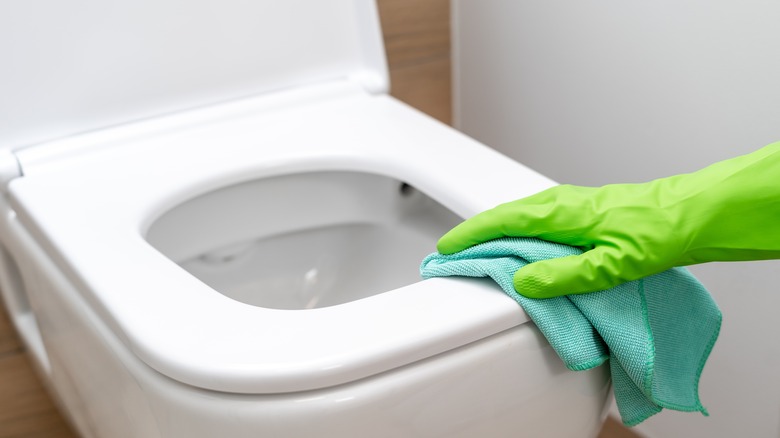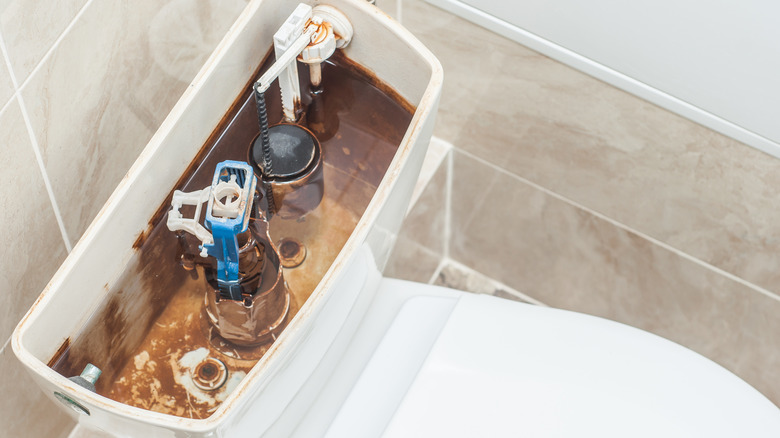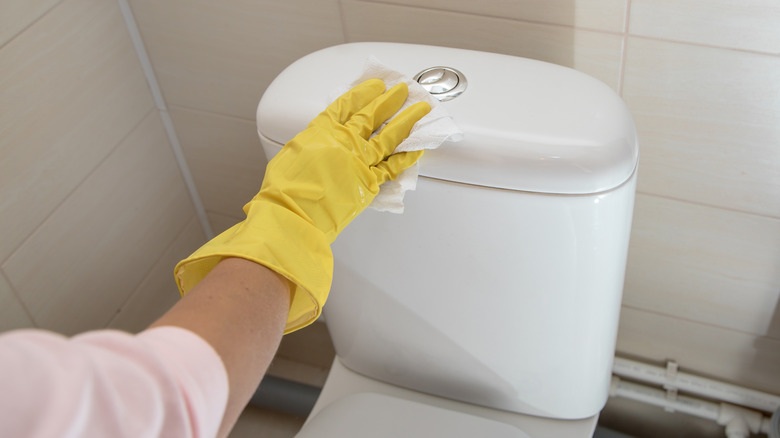The Essential Part Of Your Toilet You Probably Aren't Cleaning Enough
We may receive a commission on purchases made from links.
Keeping our bathrooms clean is a task many of us undertake religiously. It's not just about maintaining a pristine bathroom; it's also about ensuring hygiene and preventing potential health hazards. As hotspots for moisture and bacteria, bathrooms demand regular attention to keep them sanitary and pleasant. Yet, amidst the scrubbing of tiles and wiping down of sinks, one crucial component often gets overlooked — the toilet flapper. Just like any other part of your bathroom, the toilet flapper needs regular cleaning. It might be small, but its role in the smooth operation of your toilet is immense. It's the seal responsible for controlling the flow of water from the tank to the bowl during flushing. Over time, this tiny rubber piece can accumulate mineral deposits, grime, and even mold, leading to various issues. Cleaning it every six months or so will help prevent buildup and ensure proper sealing whenever you flush the toilet.
Signs that your toilet flapper needs cleaning include constantly running water leaking into the bowl or a weak flush, indicating that insufficient water is being released into the bowl. The latter could be an indication that the flapper is deteriorating. Hearing your toilet spontaneously flush without anyone using it is another sign of a leaking flapper, as it allows water to drain from the tank slowly.
Cleaning your toilet flapper
To clean your toilet flapper effectively, you'll need a plunger, a bucket or any small container, white vinegar, and an old toothbrush or scouring pad. You might also want to wear rubber gloves to protect your hands during cleaning. Start by turning off the water supply and flushing the toilet to empty the tank. Next, grab the plunger and use it to remove any debris lingering in the toilet bowl. Now, it's time to tackle the tank.
Scoop out any remaining water from the tank using a bucket or small container to make accessing the flapper and surrounding areas easier. Dip your old toothbrush, scouring pad, or small brush in the white vinegar, then thoroughly scrub the flapper and the surrounding area. Pay close attention to sections where mineral buildup or debris may be present, as this can affect the flapper's performance. Once you've scrubbed everything down, rinse the flapper and the rest of the tank thoroughly with water, removing all traces of the white vinegar. Then, reassemble the toilet. You can now turn the water supply back on. Flush the toilet to ensure it's functional. If everything looks good and the toilet flushes smoothly, you're all set!
Other options for cleaning your toilet flapper include Lime A Way, a mineral-removing solution, which retails at $6.99 on Amazon for a 28-ounce bottle, or a mixture of baking soda, hot water, and white vinegar.
Toilet flapper care and maintenance
Maintaining your toilet flapper is crucial for the overall health and efficiency of your toilet system. Besides proper cleaning, there are some essential maintenance tips for keeping your flapper in good working condition. During your regular bathroom cleaning routine, take the time to inspect the condition of your toilet flapper. Look for any signs of wear and tear, such as cracks, tears, or deformities. Even minor damages can compromise the flapper's ability to create a tight seal, leading to leaks and wasted water.
The water quality in your area can also impact the lifespan of your toilet flapper. Hard water, which contains high levels of minerals like calcium and magnesium, can accelerate mineral buildup on the flapper. Consider installing a water softener to reduce mineral deposits and extend the life of your toilet components.
However, even with regular cleaning and maintenance, toilet flappers will eventually wear out and may need replacement every three to five years. If you notice persistent leaks, weak flushes, or visible damage to the flapper, it's time for a replacement. By following these cleaning and maintenance tips, you can ensure that your toilet flapper remains in optimal condition, promoting efficient flushing and preventing water waste.


